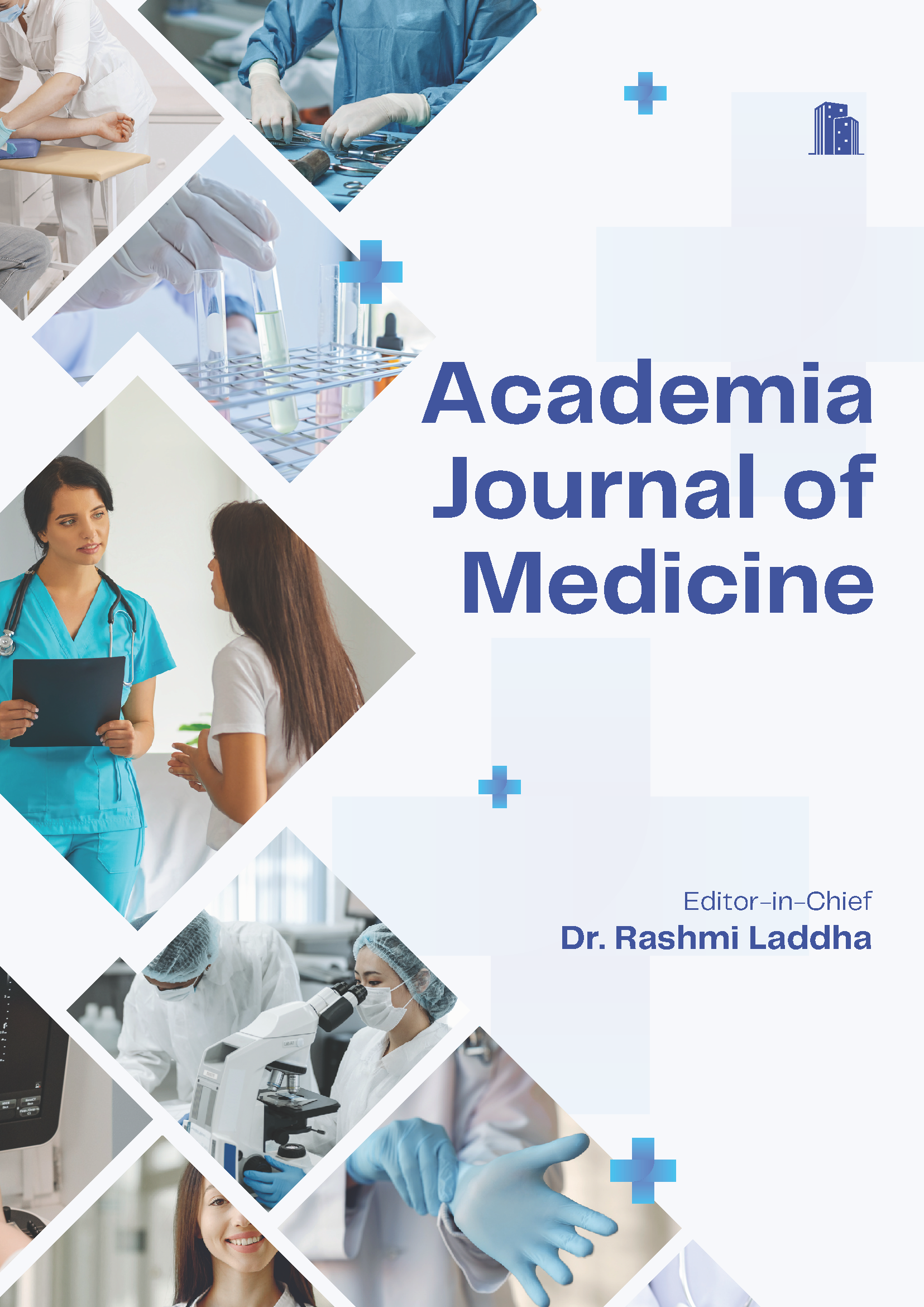Incidence of oral potentially malignant disorders requiring surgical excision in young vs elderly populations
DOI:
https://doi.org/10.48165/ajm.2025.8.02.8Keywords:
Oral potentially malignantdisorders, Oral submucous fibrosis, Leukoplakia, Dysplasia, Age related differences, Surgical excisionAbstract
Aim To compare the incidence and clinical presentation of oral potentially malignant disorders (OPMDs) necessitating surgical excision in younger and older populations, and to assess age-related variations in lesion characteristics, surgical outcomes, and potential risk factors.Methods Across-sectional observational study was performed on 100 patients who underwent surgical excision of oral potentially malignant disorders (OPMDs). Patients were categorised into two groups: young (n=40) and elderly (n=60). Demographics, risk factors, lesion characteristics, histopathology, and postoperative outcomes, including recurrence and malignant transformation, were documented. Statistical analysis encompassed descriptive statistics, Chi-square tests, and logistic regression; a p-value of <0.05 was deemed significant. ResultsYounger patients were more likely to chew areca nuts, while older patients were more likely to smoke and drink alcohol. OSMF was more common in younger patients, while non-homogeneous leukoplakia and erythroplakia were more common in older patients. Younger patients were more likely to have mild dysplasia, while older patients were more likely to have moderate to severe dysplasia. Recurrence transpired in 16.7% of elderly patients compared to 5% of younger patients (p=0.04), and malignant transformation was noted exclusively in the elderly cohort (6.7%). conclusion younger patients with OPMDs mostly have OSMF and mild dysplasia, while older patients have more advanced dysplasia, recurrence, and malignant transformation. To get the best results, you need to do risk assessments based on age, come up with preventive measures, and keep a close eye on things.Downloads
References
Warnakulasuriya S, et al. Oral potentially malignant disorders: A comprehensive review. Oral Oncol. 2020;102:104551.
Arduino PG, et al. Malignant potential of oral potentially malignant disorders: A systematic review and meta-analysis. Oral Dis. 2013;19(5):442–455.
Mello FW, et al. Global prevalence of oral potentially malignant disorders: A systematic review and meta-analysis. Oral Dis. 2018;24(1–2):190–208.
Gupta B, et al. Global epidemiology of head and neck cancers: A continuing challenge. Oncol. 2016;91(1):13–23.
Mehrotra R, et al. Prevalence of oral potentially malignant disorders in India: Systematic review and meta-analysis. J Oral Biol Craniofac Res. 2020;10(4):629–639.
van der Waal I. Potentially malignant disorders of the oral and oropharyngeal mucosa; terminology, classification and present concepts of management. Oral Oncol. 2009;45(4–5):317–323.
Tilakaratne WM, et al. Oral submucous fibrosis: A contemporary narrative review with a proposed interventional management protocol. Oral Surg Oral Med Oral Pathol Oral Radiol. 2021;131(1):27–45.
Thomson PJ. Field change and oral cancer: New evidence for widespread carcinogenesis? Int J Oral Maxillofac Surg. 2002;31(3):262–266.
Holmstrup P, Vedtofte P, Reibel J, Stoltze K. Long-term treatment outcome of oral premalignant lesions. Oral Oncol. 2006;42(5):461–474.
Warnakulasuriya S, Johnson NW, van der Waal I. Nomenclature and classification of potentially malignant disorders of the oral mucosa. J Oral Pathol Med. 2007;36(10):575–580.
Napier SS, Speight PM. Natural history of potentially malignant oral lesions and conditions: An overview of the literature. J Oral Pathol Med. 2008;37(1):1–10.
Holmstrup P, Dabelsteen E. Oral premalignant lesions: Is a biopsy reliable? J Oral Pathol Med. 1993;22(2):55–60.
Tilakaratne WM, Ekanayaka RP, Warnakulasuriya S. Oral submucous fibrosis: A historical perspective and a review on etiology and pathogenesis. Oral Surg Oral Med Oral Pathol Oral Radiol. 2016;122(2):178–191.
Arakeri G, Brennan PA. Oral submucous fibrosis: An overview of the aetiology, pathogenesis, classification, and principles of management. Br J Oral Maxillofac Surg. 2013;51(7):587–593.
Arduino PG, Surace A, Carbone M, et al. Outcome of oral dysplasia: A retrospective hospital-based study of 207 patients with a long follow-up. Oral Oncol. 2009;45(9):890–894.
Thomson PJ. Field change and oral cancer: New evidence for widespread carcinogenesis? Int J Oral Maxillofac Surg. 2002;31(3):262–266.
Holmstrup P, Dabelsteen E. Oral premalignant lesions: Is a biopsy reliable? J Oral Pathol Med. 1993;22(2):55–60.
